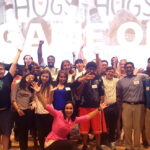Self tagging is really the heart of the Red Rover system. The process is misleadingly simple, in terms of the power and flexibility the function brings to education.
How It Works:
1) Students can enter tags as they think of them. As this is a huge question (describe yourself and your interests one word at a time) most people would start to slow down after 5 or 6 words. That’s when the groups’ tags come in . . .
2) By clicking on a group category, i.e. “professional” the student can see a pop-up of all the tags of all the groups at the school. (Of course this will vary from institution to institution based on how many groups they have and how extensively these groups have tagged themselves.) From this list, the student can quickly scan and pick words from these tags that seem to fit.
VIDEO FILE NO LONGER AVAILABLE
Key Concepts
1. Self tagging along the group category lists allows for group recommendations. (The next step).
2. Interest and profile tagging allow the institution to sort and filter so that communication can be specific. I.e. the career center can deliver dentistry internships to those students who have dentistry in their professional category (without SPAMing everyone).
3. The student(s) can create new categories of interest the institution may not yet be aware of, creating new opportunities for grouping. This will help increase the responsiveness and flexibility of activities. I.e. If “web 2.0” becomes is tagged by many people, the institution can find a leader from among those expressing interest and that student can organize the new group very quickly. (Motivated student leaders will also be able to organize and propose the group on their own.)
4. Self tagging creates matchable “surface area”, setting the system up for future recommendation possibilities. I.e. student’s like you enjoyed x class, or y experience, their sophomore year.
5. Open tagging structure allows full service of the “long tail” – where even the student who has an interest shared by only a few others can find their people. Whereas institution created hierarchies will inherently serve more popular interests due to baseline logistics time/expenses.
Future Additions to This Function
1. Tagging via text message. So students could opt into anything from an e-mail, poster, or professor announcement by adding the key tag with their cell phone.
2. Gradient feedback. Instead of just encouraging the student to have at least 7 tags, they will have a color coded feedback system that gets more green as they add more tags.
Have thoughts/feedback/ideas? Leave a comment below.




